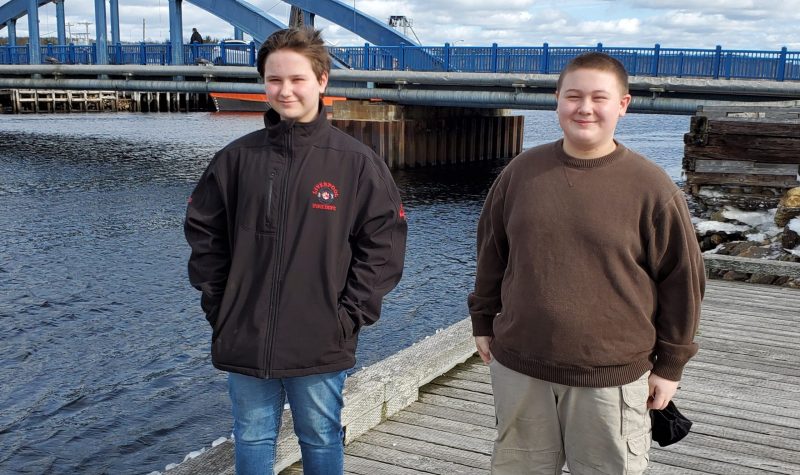A brother sister team at South Queens Middle School are part of classes hoping their science experiment will lead to a cleaner Mersey River.*
Two classes of grade-seven students have been testing sites up and down the Mersey since October tracking levels of enterococci bacteria in the water.
Garfield Gallant-Zwicker says they were inspired by teacher Jill Leuschner’s lessons about another student who took on a similar mission.
“We started learning about Stella Bowles and personal empowerment, which is where you feel like you can make positive change,” said Gallant-Zwicker. “Stella had tested the LaHave River so that gave us the idea to test the Mersey River.”
Gallant-Zwicker says the results of that testing were not good.
“The level is 70, you should not swim and [at] 170ml, the water should not come in contact with your skin. We had over 170,” said Gallant-Zwicker.
According to the U.S. Environmental Protection Agency, enterococci are indicators of the presence of fecal material in water and, therefore, of the possible presence of disease-causing bacteria, viruses, and protozoa. These pathogens can sicken swimmers and others who use rivers and streams for recreation.
The siblings brought their findings to Region of Queens Council in the hope the municipality would take action to stop whatever was polluting the river.
Mayor Darlene Norman explained, unfortunately, there is little the region can do on its own.
“As a municipality, we can not go traipsing across people’s properties,” said Norman. “We are legally not allowed, besides, it’s a homeowner’s responsibility to have a functioning system.”
Garfield's sister Olivia Gallant-Zwicker says they didn’t get as much support as they hoped but council did point them in the right direction.
“We were kind of hoping that council would help us more. They did encourage us to go right to (Queens-Shelburne MLA) Kim Masland and (MP for South Shore-St. Margarets) Bernadette Jordan, which we did,” said Gallant-Zwicker.
Regional council did go a step further and wrote a letter on behalf of the students to the provincial environment minister.
The response from then Minister Gordon Wilson said, “Nova Scotia Environment does not undertake water quality studies or prepare/undertake remediation plans. In instances where water quality impairments are suspected, the development, funding, and undertaking of these types of projects are often led by local organizations, to which we may provide guidance upon request.”
The students decided to reach out to the same organization that had worked with Stella Bowles, Coastal Action.
Assistant director Shanna Fredericks says she will join the students in collecting samples and conduct what is known as parallel testing to validate their results.
“The kids are going to collect their water samples as they normally do and test them with the equipment that they’ve been using and I’m going to collect some samples right alongside them and take them to our lab in the city, so an accredited laboratory. We’ll have those samples tested at the lab and then we’ll compare the results and see how they line up,” said Fredericks.
Olivia Gallant-Zwicker says once they had taken the water samples, their process is relatively simple.
“We incubated it for 72 hours,” said Gallant-Zwicker. “After that, all the dots on the cards would show up and, [it was a] surprising amount.”
Fredericks says to see young people tackle these large problems is inspiring.
“It’s just great to see these kids feeling empowered and passionate about environmental issues and being able to follow in Stella’s footsteps and see that they can actually make a difference,” said Fredericks.
Now that they’ve found their community partner, the students will continue taking water samples from the Mersey and documenting their findings.
Garfield Gallant-Zwicker says their end goal is simple.
“We’re hoping to see at the end of this that our water will return to how it used to be, nice and clean, so then people can swim into it.”
*The story has been changed to reflect the two classes of SQMS students involved in the water testing project.
Reported by Ed Halverson
E-mail: edhalversonnews@gmail.com
Twitter: @edwardhalverson
To listen to the broadcast of this story, press play below.


